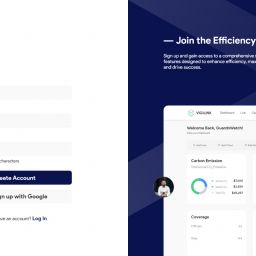Workforce Management Software for Corporate Training: Revolutionizing Employee Development
In the fast-paced and dynamic corporate world, continuous learning and development have become paramount for businesses to stay competitive and thrive. Corporate training plays a vital role in enhancing employee skills, knowledge, and capabilities, leading to improved performance and productivity. As companies grow and globalize, managing training programs efficiently and effectively becomes increasingly challenging. This is where workforce management software steps in as a game-changer. In this article, we explore the significance of workforce management software in corporate training and how it revolutionizes employee development.
1. Centralized Training Management
One of the most significant advantages of workforce management software for corporate training is its ability to centralize training management. Instead of juggling multiple spreadsheets, emails, or manual tracking systems, HR and training departments can use a unified platform to create, manage, and track training programs. This centralization streamlines the entire training process, making it more organized, accessible, and scalable.
Through a centralized system, training managers can easily assign courses, monitor progress, and analyze results in real-time. This level of visibility and control allows for better tracking of training completion rates and helps identify employees who might need additional support or coaching. Ultimately, centralization saves time and effort while ensuring a consistent and efficient training experience for all employees.
2. Personalized Learning Paths
Every employee is unique, with different skills, backgrounds, and career aspirations. Workforce management software enables the creation of personalized learning paths that cater to individual needs and goals. By using data-driven insights, such as performance metrics and self-assessment results, the software can recommend relevant courses and training materials to employees.
Personalized learning paths empower employees to take charge of their professional development. When employees feel that their organization invests in their growth and tailors training to their specific needs, they are more likely to be engaged and committed to continuous learning.
3. Blended Learning Opportunities
Workforce management software allows companies to offer blended learning opportunities, combining various training methods such as e-learning modules, virtual classrooms, instructor-led sessions, and on-the-job training. This flexibility in training delivery accommodates diverse learning preferences and ensures that employees receive the most effective and engaging learning experience.
Blended learning also fosters a sense of community among employees as they can collaborate, discuss, and share insights during virtual sessions. It promotes a culture of knowledge-sharing and peer learning, further enhancing the overall training experience.
4. Training Resource Management
Managing training resources, such as training materials, equipment, and trainers, can be a logistical challenge. Workforce management software simplifies this task by providing a comprehensive resource management system. Training managers can schedule training sessions, allocate resources, and track availability, ensuring that training is well-organized and runs smoothly.
Furthermore, the software can generate automated notifications and reminders for both trainers and trainees, reducing the risk of missed sessions and improving overall training compliance.
5. Performance Evaluation and Feedback
Workforce management software plays a critical role in evaluating training program effectiveness. Through assessments, quizzes, and surveys, companies can measure the impact of training on employee performance and knowledge retention. Detailed analytics provide valuable insights into the strengths and weaknesses of the training content and delivery methods, enabling organizations to make data-driven improvements to their training programs.
In addition to evaluating training outcomes, the software facilitates continuous feedback loops. Employees can provide feedback on training sessions, allowing trainers to adapt and refine their approaches based on learner preferences and needs. Constructive feedback fosters a culture of continuous improvement and emphasizes the organization’s commitment to providing high-quality training opportunities.
6. Compliance and Certifications
Certain industries have strict regulatory requirements, and employees must complete specific training programs to maintain compliance. Workforce management software helps ensure that all mandatory training is completed on time, reducing the risk of non-compliance and associated penalties.
Moreover, the software can automate the issuance of certifications and qualifications upon successful completion of training. This feature is particularly valuable for industries where employees must hold specific certifications to perform their roles effectively, such as healthcare, finance, or aviation.
7. Real-time Progress Tracking
Timely and accurate progress tracking is essential to monitor the effectiveness of training initiatives and to identify potential roadblocks in learning. Workforce management software provides real-time progress tracking, allowing managers and employees to assess their training journey continuously.
With instant access to progress reports and completion status, managers can intervene when necessary, offering support and resources to employees who might be facing challenges in their training. This proactive approach prevents delays in skill development and ensures a more successful training experience overall.
Conclusion:
Workforce management software has revolutionized corporate training by streamlining training processes, offering personalized learning paths, supporting blended learning opportunities, and optimizing resource management. Through data-driven insights, companies can continually improve their training programs, maximizing the impact on employee performance and engagement.
The adoption of workforce management software for corporate training is not just a technological upgrade; it represents a shift in organizational culture towards valuing employee development and growth. When employees feel invested in and supported through effective training programs, they are more likely to stay motivated, engaged, and committed to achieving both personal and organizational success. Embracing workforce management software as a key component of corporate training is a strategic move that positions businesses to thrive in a rapidly evolving and competitive marketplace.
















